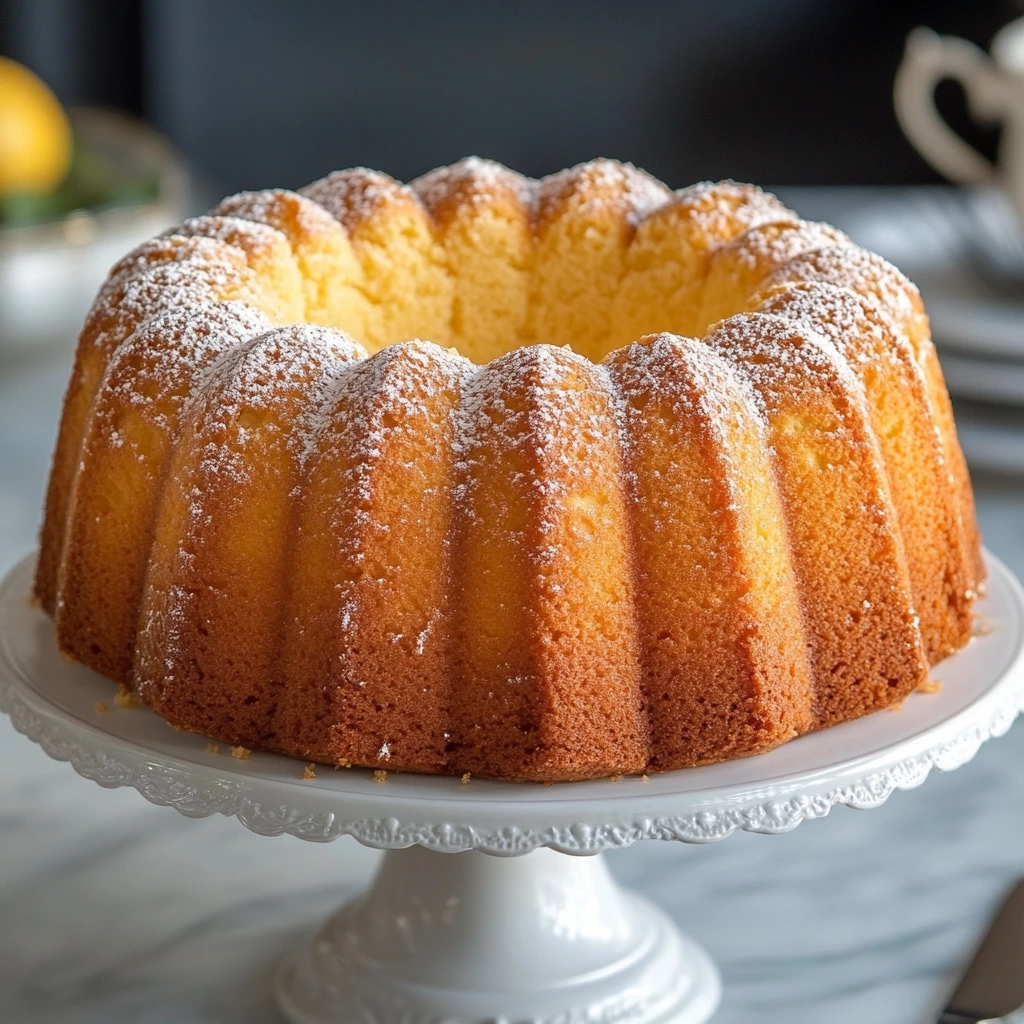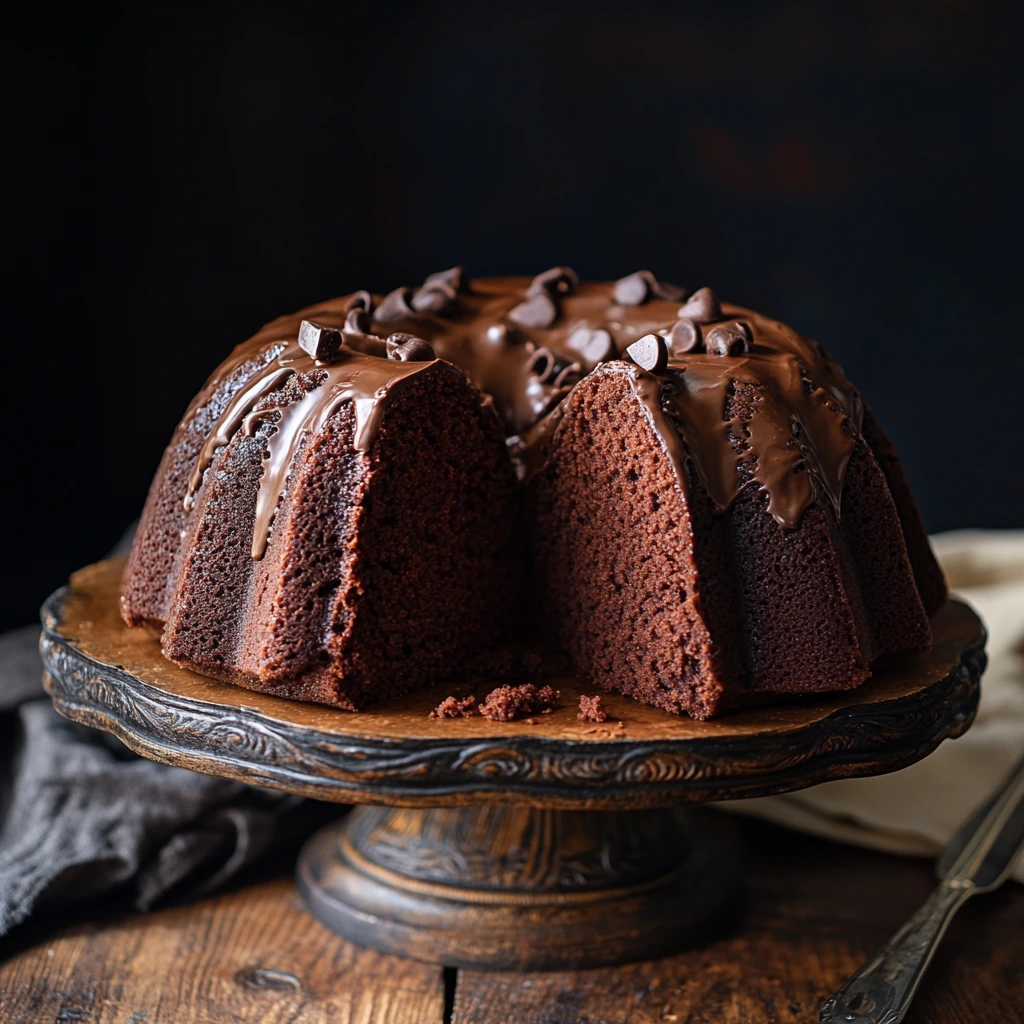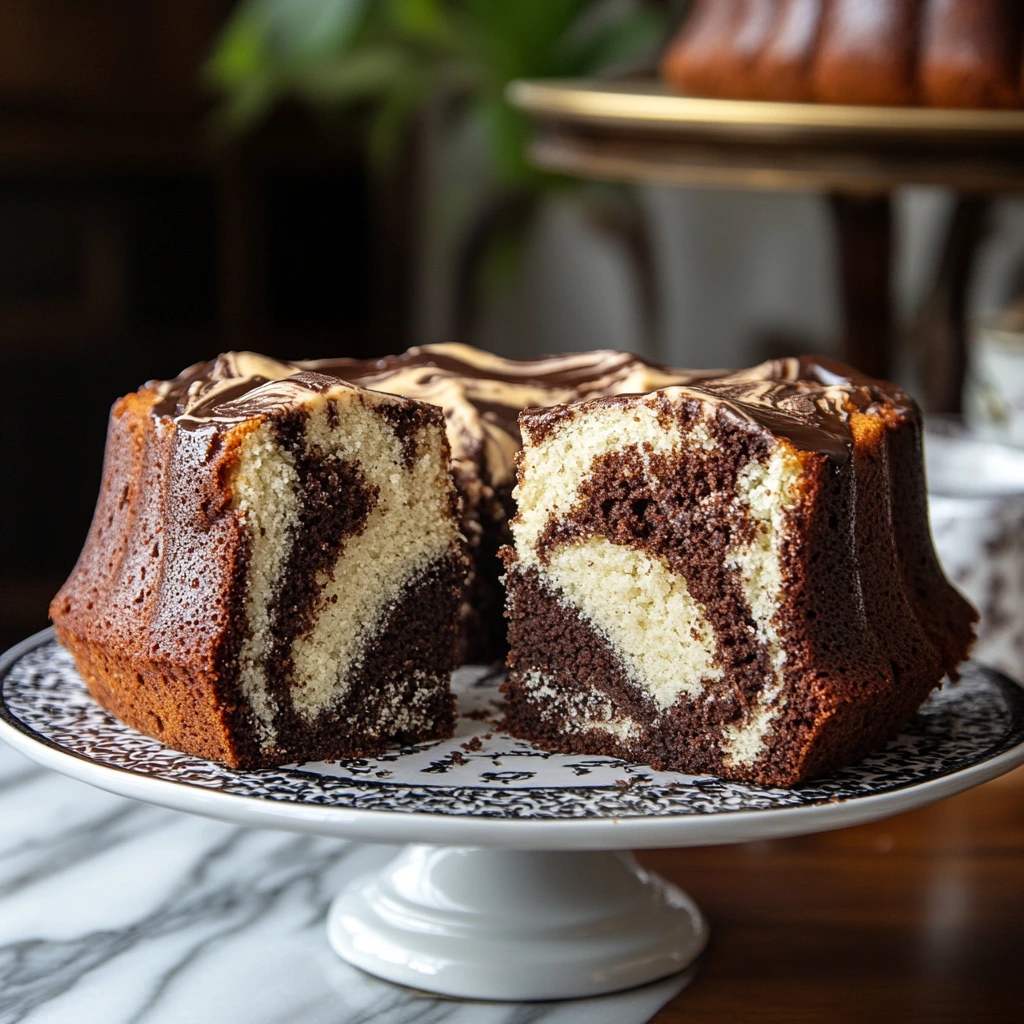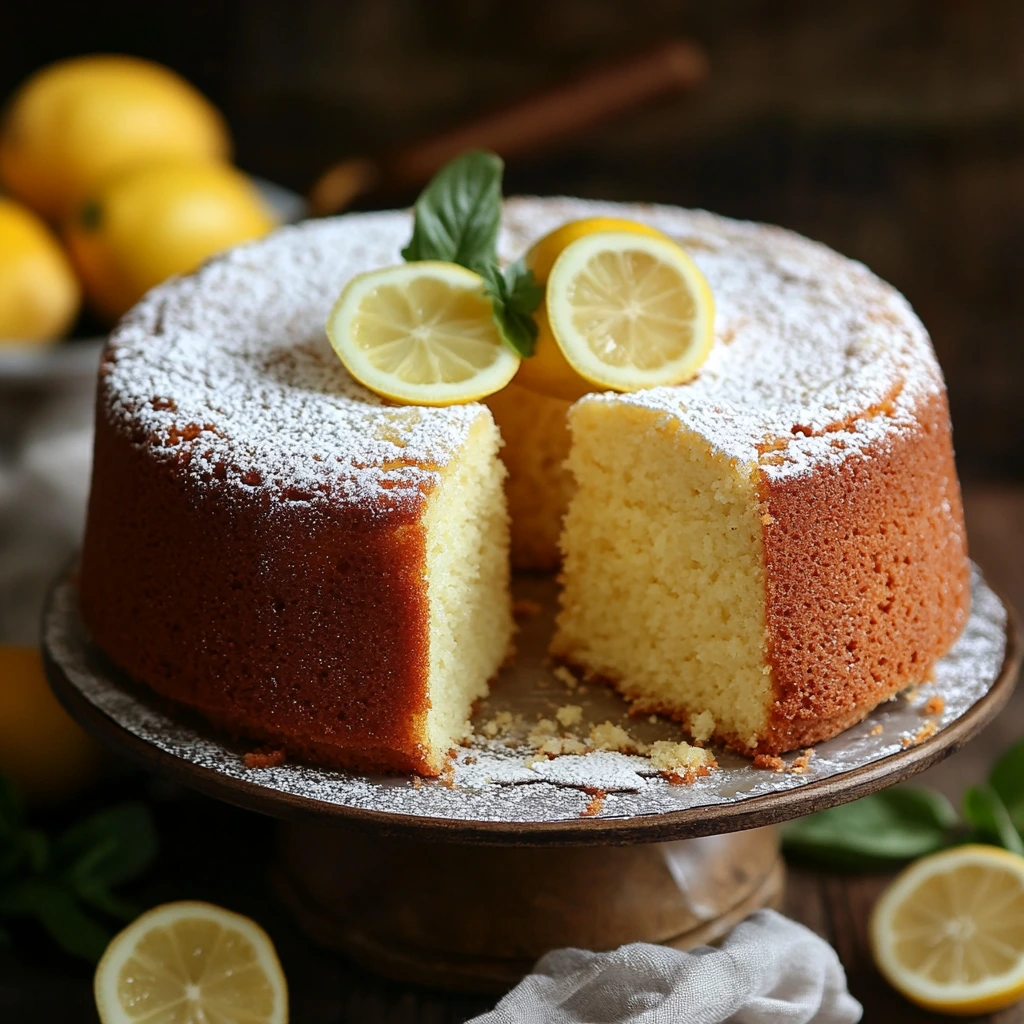What Makes Pound Cake a Classic Delight?
Pound cake is a timeless dessert loved for its rich, buttery flavor and dense yet tender texture. Traditionally made with just four simple ingredients—flour, butter, sugar, and eggs—this cake has stood the test of time as a go-to treat for bakers of all skill levels. Its name originates from the original recipe, which called for one pound of each ingredient, creating a perfectly balanced, indulgent cake.
While the classic pound cake remains a favorite, bakers today have introduced exciting variations, incorporating flavors like vanilla, lemon, and almond, as well as modern twists like cream cheese pound cake or gluten-free alternatives. Whether served plain, dusted with powdered sugar, or drizzled with a sweet glaze, pound cake pairs beautifully with coffee, tea, or fresh fruit, making it a versatile dessert for any occasion.
In this guide, we’ll explore the essential ingredients, baking techniques, and expert tips to help you achieve the perfect pound cake—moist, flavorful, and irresistibly soft. Whether you’re a beginner or an experienced baker, these tricks will ensure your pound cake turns out flawless every time! Let’s get started.

The Essential Ingredients for a Perfect Pound Cake
The key to baking a perfect pound cake lies in using the right ingredients and understanding their roles in the baking process. Since pound cake is a simple, ingredient-driven recipe, each component plays a crucial part in creating the signature texture and flavor. Let’s break down the essential ingredients and why they matter.
1. Flour Selection: The Foundation of Pound Cake
Flour is the structural base of pound cake, and choosing the right type affects its texture and density. The most commonly used flour for pound cake is all-purpose flour, as it provides enough structure without making the cake too dense. However, some bakers prefer using cake flour for a lighter, more delicate crumb.
Key Tips:
- Sift the flour before adding it to the batter to remove lumps and incorporate air.
- Measure correctly by spooning the flour into a measuring cup and leveling it off to avoid using too much, which can make the cake dry.
2. Butter and Sugar: The Secret to a Soft and Moist Cake
Pound cake is known for its buttery richness, which comes from high-quality butter. Using unsalted butter is recommended, as it allows you to control the amount of salt in the recipe. Butter should be at room temperature to ensure proper creaming with sugar, which helps create a light and fluffy texture.
Sugar not only sweetens the cake but also plays a role in texture and moisture retention. Traditional pound cake recipes use granulated sugar, but some variations incorporate brown sugar for a hint of caramel-like flavor.
Key Tips:
- Cream butter and sugar together until light and fluffy—this step is crucial for incorporating air into the batter, leading to a soft crumb.
- Avoid over-creaming, as too much air can cause the cake to collapse while baking.
3. Eggs and Leavening: Creating the Perfect Structure
Eggs provide moisture, richness, and structure to pound cake. The proteins in eggs help set the cake while baking, while the fats contribute to its tender texture. Traditional pound cake recipes rely solely on eggs for structure without added leavening agents like baking powder or baking soda. However, modern recipes sometimes include a small amount of leavening to enhance the rise.
Key Tips:
- Use room temperature eggs to help them incorporate evenly into the batter.
- Add eggs one at a time, mixing well after each addition to prevent curdling.
4. Flavor Enhancers: Bringing Out the Best Taste
While classic pound cake is rich on its own, adding flavoring agents can enhance its taste. The most popular choices include:
- Vanilla Extract: Adds a warm and aromatic depth to the cake.
- Lemon Zest or Almond Extract: Provides a refreshing twist to the flavor profile.
- Salt: A pinch of salt balances sweetness and brings out the richness of the butter.
Key Tips:
- Use high-quality vanilla extract rather than imitation for the best flavor.
- If adding citrus zest, be careful not to include the bitter white pith.
5. Optional Moisture Boosters: For Extra Softness
Some bakers incorporate dairy or other liquids to improve moisture and tenderness in their pound cake. These include:
- Milk or Buttermilk: Adds slight acidity, creating a more tender crumb.
- Sour Cream or Yogurt: Contributes moisture and richness while adding a slight tang.
Key Tips:
- Adding sour cream can make the cake extra moist and soft without affecting its classic taste.
- If using buttermilk, reduce the amount of eggs slightly to keep the batter balanced.

Step-by-Step Guide to Making Pound Cake
Baking the perfect pound cake requires the right technique, proper ingredient measurements, and careful attention to detail. Follow this step-by-step guide to achieve a moist, buttery, and flavorful pound cake every time.
Ingredients for Classic Pound Cake
To make a classic buttery pound cake, you’ll need:
Dry Ingredients:
- 2 ½ cups (310g) all-purpose flour – Provides structure to the cake.
- ½ teaspoon salt – Enhances flavor and balances sweetness.
- ½ teaspoon baking powder (optional) – Helps with a slightly lighter texture (traditional pound cake doesn’t use leavening).
Wet Ingredients:
- 1 cup (226g) unsalted butter, softened – Adds richness and a tender crumb.
- 2 cups (400g) granulated sugar – Sweetens and contributes to texture.
- 4 large eggs, at room temperature – Helps with structure and moisture.
- 1 tablespoon vanilla extract – Enhances the overall flavor.
- ½ cup (120ml) whole milk or buttermilk – Provides extra moisture and tenderness.
Step 1: Preparing Your Equipment and Ingredients
. Preheat the Oven
- Preheat your oven to 325°F (163°C). A lower baking temperature ensures even baking and prevents the cake from browning too quickly on the outside while staying raw in the center.
. Grease and Prepare the Baking Pan
- Use a 9×5-inch loaf pan or a 10-inch bundt pan.
- Grease the pan thoroughly with butter or non-stick baking spray and dust it lightly with flour to prevent sticking.
. Measure and Sift the Dry Ingredients
- In a bowl, whisk together flour, salt, and baking powder (if using). Sifting ensures a light texture and prevents clumps.
Step 2: Mixing the Batter Properly
. Cream the Butter and Sugar
- In a large mixing bowl, use a hand mixer or stand mixer to cream together:
- 1 cup (226g) softened butter
- 2 cups (400g) granulated sugar
- Beat on medium speed for 3–5 minutes until the mixture becomes pale and fluffy. This step incorporates air, ensuring a lighter texture.
. Add the Eggs One at a Time
- Add 4 large eggs, one at a time, mixing well after each addition.
- Scrape down the sides of the bowl to ensure even mixing.
- Mixing the eggs properly helps create a smooth and uniform batter.
. Mix in Vanilla Extract and Liquid Ingredients
- Stir in 1 tablespoon vanilla extract for a rich, aromatic flavor.
- Gradually add ½ cup (120ml) whole milk or buttermilk, alternating with the dry ingredients to prevent curdling.
Step 3: Combining and Finishing the Batter
. Add the Dry Ingredients Gradually
- Slowly add the flour mixture to the wet ingredients in three batches, mixing on low speed.
- Avoid over-mixing—stop as soon as the flour is fully incorporated to prevent a dense cake.
. Final Batter Check
- The batter should be smooth, thick, and creamy with no lumps.
- Use a spatula to fold the batter gently, making sure everything is well combined.
Step 4: Baking the Pound Cake to Perfection
. Transfer Batter to the Pan
- Pour the batter into the prepared loaf or bundt pan.
- Smooth the top with a spatula to ensure even baking.
. Bake the Cake
- Place the cake in the center rack of the oven.
- Bake at 325°F (163°C) for 60–75 minutes (loaf pan) or 70–85 minutes (bundt pan), or until:
- The top is golden brown.
- A toothpick inserted in the center comes out clean.
. Cooling the Cake Properly
- Let the cake cool in the pan for 10–15 minutes before transferring it to a wire rack.
- Cooling in the pan too long can make it soggy, while removing it too soon may cause it to break apart.
Step 5: Serving and Storing Your Pound Cake
. Serve and Enjoy!
- Slice and serve warm, at room temperature, or chilled.
- Great on its own, or serve with:
- A dusting of powdered sugar.
- A drizzle of vanilla or lemon glaze.
- A dollop of whipped cream or fresh berries.

Common Mistakes to Avoid When Baking Pound Cake
Baking the perfect pound cake is all about precision, patience, and understanding the science behind the ingredients. Even experienced bakers can run into problems if they overlook key steps. To help you achieve a rich, moist, and buttery pound cake, here are some common mistakes to avoid—along with practical solutions.
1. Using Cold Ingredients
Why It’s a Problem:
- Cold butter, eggs, or milk won’t mix properly, leading to a dense and uneven batter.
- Butter that isn’t soft enough won’t cream properly with sugar, preventing the incorporation of air needed for a light texture.
How to Fix It:
- Always use room temperature ingredients (butter, eggs, and milk).
- Let butter sit out for 30–60 minutes before using or soften it quickly by cutting it into small pieces.
- Place eggs in warm water for 5–10 minutes to bring them to room temperature faster.
2. Over or Under Mixing the Batter
Why It’s a Problem:
- Over-mixing can develop too much gluten, making the cake tough and chewy instead of soft and tender.
- Under-mixing can lead to streaks of flour or uneven texture.
How to Fix It:
- Cream butter and sugar for about 3–5 minutes until light and fluffy.
- Add eggs one at a time, mixing well after each addition.
- When adding dry ingredients, mix on low speed and stop as soon as the flour disappears to prevent over-mixing.
3. Skipping the Sifting Process
Why It’s a Problem:
- Unsifted flour can clump together, making the batter uneven.
- Sifting aerates the flour, helping create a lighter cake texture.
How to Fix It:
- Always sift dry ingredients (flour, salt, baking powder) before adding them to the batter.
- If you don’t have a sifter, whisk the dry ingredients in a bowl to break up any clumps.
4. Not Measuring Ingredients Correctly
Why It’s a Problem:
- Too much flour = a dry and crumbly cake.
- Too much sugar = a cake that may collapse in the center.
- Too little butter or eggs = lack of moisture and richness.
How to Fix It:
- Use the spoon-and-level method for measuring flour: spoon flour into a measuring cup and level it off with a knife (don’t scoop directly from the bag).
- Use a kitchen scale for accuracy—this is especially important for baking.
- Follow the recipe precisely without making random substitutions.
5. Incorrect Oven Temperature or Baking Time
Why It’s a Problem:
- An oven that’s too hot can cause the cake to rise too quickly and crack on top.
- An oven that’s too cold can lead to an undercooked or dense cake.
- Opening the oven door too early can cause the cake to sink.
How to Fix It:
- Preheat your oven to 325°F (163°C) and let it heat for at least 10–15 minutes before baking.
- Use an oven thermometer to check for accuracy—many ovens run hotter or cooler than the displayed temperature.
- Avoid opening the oven door in the first 40–50 minutes of baking to prevent temperature fluctuations.
6. Overfilling or Underfilling the Pan
Why It’s a Problem:
- Overfilled pans can cause overflowing batter and an unevenly baked cake.
- Underfilled pans may result in a flat, underwhelming cake that doesn’t rise properly.
How to Fix It:
- Fill the pan no more than ¾ full to allow room for the cake to rise.
- If you have extra batter, use it to make mini loaf cakes or cupcakes instead of overfilling the pan.
7. Not Allowing the Cake to Cool Properly
Why It’s a Problem:
- Removing the cake too soon can cause it to break apart.
- Leaving the cake in the pan for too long can make the bottom soggy due to trapped steam.
How to Fix It:
- Let the cake cool in the pan for 10–15 minutes before transferring it to a wire rack.
- Run a knife around the edges to loosen the cake if needed.
- Allow the cake to cool completely before slicing for the best texture and flavor.
8. Using Low-Quality Ingredients
Why It’s a Problem:
- Low-quality butter can lack the richness needed for a flavorful pound cake.
- Artificial vanilla extract won’t provide the same depth of flavor as pure vanilla.
- Poor-quality eggs may affect moisture and structure.
How to Fix It:
- Use high-quality, unsalted butter (preferably European-style for extra richness).
- Choose pure vanilla extract instead of imitation vanilla.
- Use fresh, large eggs for the best results.
9. Not Storing the Cake Properly
Why It’s a Problem:
- Improper storage can cause the cake to become stale too quickly.
- Storing in the fridge uncovered can dry out the cake.
How to Fix It:
- Store at room temperature in an airtight container for up to 3 days.
- For longer storage, wrap tightly in plastic wrap and refrigerate for up to 5–7 days.
- For freezing, wrap individual slices in plastic wrap and place in a freezer bag—they’ll stay fresh for up to 3 months.

Variations and Serving Suggestions
One of the best things about pound cake is its versatility. While the classic recipe is rich and buttery on its own, you can easily experiment with different flavors, mix-ins, and toppings to create a variety of delicious versions. Whether you want to enhance the flavor, make it healthier, or pair it with the perfect accompaniments, this section will help you customize your pound cake to your liking.
1. Flavor Variations: Adding a Unique Twist
If you love the traditional taste of classic pound cake, but want to add something extra, here are some variations to try:
Classic Vanilla Pound Cake
- Stick to the original recipe but use high-quality vanilla extract for the best flavor.
- Add seeds from a vanilla bean pod for an even richer vanilla essence.
Lemon Pound Cake
- Add 1 tablespoon of fresh lemon zest and 2 tablespoons of lemon juice to the batter for a bright, citrusy flavor.
- Drizzle the baked cake with a lemon glaze made from powdered sugar and lemon juice.
Almond Pound Cake
- Replace 1 teaspoon of vanilla extract with 1 teaspoon of almond extract.
- Top with toasted almonds for extra crunch.
Chocolate Pound Cake
- Replace ½ cup (65g) of flour with ½ cup (45g) of unsweetened cocoa powder for a rich, chocolatey taste.
- Stir in ½ cup (90g) of chocolate chips for an extra indulgent touch.
Marble Pound Cake
- Prepare one vanilla and one chocolate batter separately.
- Swirl the two batters together in the pan with a skewer before baking.
Coconut Pound Cake
- Add ½ cup (40g) of shredded coconut to the batter.
- Use coconut milk instead of whole milk for an extra tropical flavor.
Pumpkin Spice Pound Cake
- Add 1 teaspoon of cinnamon, ½ teaspoon of nutmeg, and ½ teaspoon of allspice for a warm, spiced flavor.
- Replace ¼ cup (60ml) of milk with pumpkin puree for a moist texture.
Cream Cheese Pound Cake
- Add 4 ounces (113g) of softened cream cheese to the butter before creaming with sugar for a super moist and tangy cake.
2. Mix-Ins for Extra Texture and Flavor
Enhance your pound cake with delicious mix-ins that add texture and depth:
Fruits:
- Fresh Berries – Fold in blueberries, raspberries, or diced strawberries for a fruity touch.
- Dried Fruit – Add chopped dried cranberries, apricots, or raisins for sweetness.
Nuts and Seeds:
- Chopped Pecans or Walnuts – Adds a nutty crunch to each bite.
- Toasted Almonds – Perfect for almond-flavored pound cakes.
Chocolate and Caramel:
- Chocolate Chips – Adds a gooey, rich texture.
- Caramel Swirl – Drizzle caramel into the batter before baking for a decadent twist.
3. Topping Ideas: Make Your Pound Cake Even Better
Pound cake is delicious on its own, but a simple topping can elevate it to the next level.
Glazes & Frostings:
- Vanilla Glaze: Mix 1 cup powdered sugar + 2 tablespoons milk + ½ teaspoon vanilla extract.
- Lemon Glaze: Whisk together powdered sugar and fresh lemon juice.
- Chocolate Ganache: Melt ½ cup heavy cream with ¾ cup chocolate chips and pour over the cake.
Classic Toppings:
- Powdered Sugar Dusting – A simple but elegant way to finish a pound cake.
- Whipped Cream & Berries – Light and refreshing, perfect for summer.
- Honey or Maple Syrup Drizzle – Adds a subtle sweetness.
Ice Cream & Sauces:
- Vanilla, Chocolate, or Strawberry Ice Cream – A warm slice of pound cake with a scoop of ice cream is a match made in heaven.
- Berry Compote or Jam – Serve with warm blueberry, raspberry, or strawberry compote.
4. The Best Ways to Serve Pound Cake
For Dessert:
- Warm up a slice and top with vanilla ice cream and caramel drizzle.
- Serve with chocolate ganache and fresh berries for an elegant dessert.
- Make pound cake French toast by dipping slices in an egg mixture and pan-frying them.
For Special Occasions:
- Stack multiple layers of pound cake with whipped cream and fruit for a simple layered cake.
- Serve at tea parties, birthdays, or holiday gatherings with a variety of toppings for guests to choose from.

Mastering the Art of Pound Cake
Pound cake is a timeless dessert that combines rich buttery flavor, a tender crumb, and endless versatility. Whether you prefer the classic version or want to experiment with exciting flavor variations, mix-ins, and toppings, this cake is perfect for any occasion—from breakfast to dessert.
By following the right techniques, using high-quality ingredients, and avoiding common baking mistakes, you can achieve a moist, flavorful, and perfectly textured pound cake every time. Whether you enjoy it plain, with a glaze, fresh fruit, or a scoop of ice cream, pound cake is a treat that never goes out of style.
Now that you have all the tips, tricks, and recipes, it’s time to preheat your oven and start baking! Try a variation that excites you, and don’t forget to share your delicious creations with friends and family. Happy baking!
